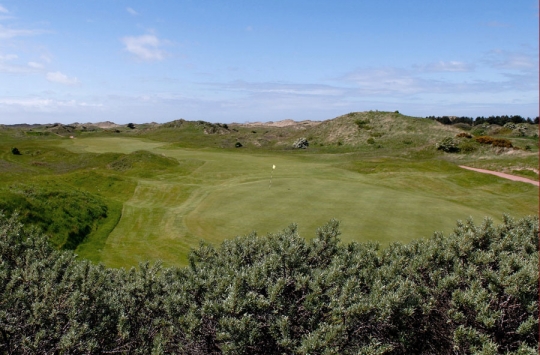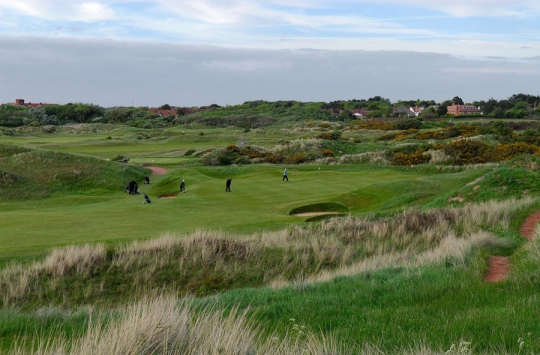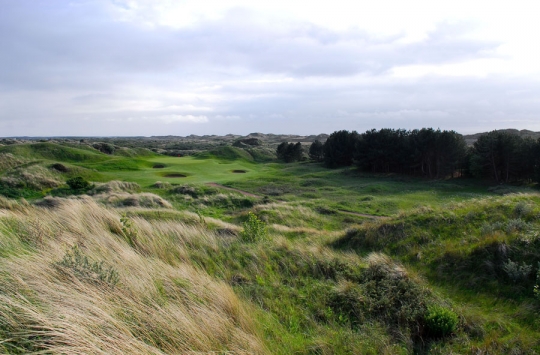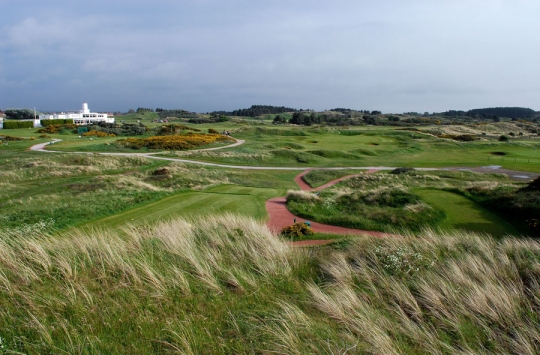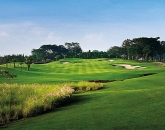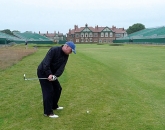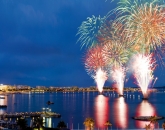An Open Championship without Tiger? Cry havoc! And let slip the dogs of war. But while the absence of the world number one is certainly a blow for his fans, at least one of his fellow professionals believes it might be a blessing in disguise.
“As big as he is in the game of golf, the game is even bigger,” Mark O'Meara, a two-time major champion and a close friend of Woods, told reporters when he participated in a media day at Royal Birkdale a month prior to the event. “The Tour will survive. I think it will be good for the game and good for him to go away for six months.”
This is an interesting theory, and although O’Meara, who won The Open the last time the championship was held at Birkdale, firmly believes that in half a year’s time Tiger will be “better than new,” there’s little doubt that the third major of the year won’t be quite the same without him in the field. “It’s a real shame…the spectators at Birkdale will be very sad,” admitted Peter Dawson, Chief Executive of the R&A.
Sad or not, you have to think the person most disappointed by the news is Tiger himself. Woods relishes the unique challenges that links golf brings—and in Royal Birkdale he’s missing what many describe as the fairest links course of them all.
Although established in the late 1800s, the course, situated on the same stretch of coastline as fellow Open Championship venues Royal Lytham & St Annes and Royal Liverpool, is really a product of the 1930s—the Golden Age of golf course architecture. Its rambling Art Deco-style clubhouse aside, the current layout is the result of a mid-30s upgrade and redesign by Fred Hawtree and the legendary J.H. Taylor.
Unlike many of the other classic links of the British Isles—including the likes of St. Andrews, Carnoustie, Royal St. Georges and Turnberry—Birkdale doesn’t feature any blind shots (the scourge of many a modern-day pro). And while the dunes that frame the course are the biggest of any course on the Open rota, Birkdale’s fairways have been routed over flat-bottomed valleys, meaning generally even lies are the order of the day. The positioning of its bunkers, too, is unusual for a links. While the hazards on older links courses are dictated more by nature than anything else, Birkdale’s bunker placement is more strategic. From tee to green, Birkdale is very much a plotters’ course; shotmakers prosper. As Bernard Darwin, the doyen of golf writers, has written of the course: “J.H. Taylor was the architect and he has unquestionably made Birkdale a ‘big’ course on which it is good fun to see the big men stretch themselves… no bad player is going to win over Birkdale, and yet it is no slogger’s paradise.” No surprise, then, that the roll call of winners reads like a who’s who of the game’s finest iron players: Peter Thomson (twice), Arnold Palmer, Lee Trevino, Johnny Miller and Tom Watson. One thinks that if Tiger had elected to play this year (gammy knee not withstanding) the engraver could start work on the Claret Jug before a ball has been struck.
Like Father, Like Son
Despite Birkdale’s reputation for strategy, architect Martin Hawtree (son of Fred, who was responsible for much of the original design) was brought in to make changes to ensure the course copes with the technological advances of the game. These changes resulted in the course being lengthened by just 155 yards to 7,173, still short by today's standards. Birkdale remains a par 70 with just two par fives at the 15th and 17th, while the toughest hole remains the 6th which has been lengthened from 480 to 499 yards. The main alterations are six new tees and 20 new bunkers, only four of which are greenside.
Birkdale Beauty
The 184 yard 12th is one of only two holes that hasn’t been altered since 1998 (the other being the 7th)—and for good reason. This stunning par-3 (see cover image), one of the most famous short holes at any of the Open venues, demands an approach to a green that’s nestled deep into the dunes and protected by four bunkers. Depending on the direction and strength of the wind, the hole will play anywhere from a 7-iron to a 2-iron, so expect to see a wide dispersion of scores.
The Concession
It was at Royal Birkdale where one of the Ryder Cup’s most famous singles games took place. In 1969, on his Ryder Cup debut, Jack Nicklaus played reigning Open champion Tony Jacklin in the deciding final match. After seventeen stirring holes, Nicklaus conceded the Englishman’s “very missable” three-footer on the final green for a half—a gesture that ensured the first ever tied Ryder Cup contest.
Leave Home Without It
The Open is a strictly mobile phone-free area. At Carnoustie last year, one spectator attempted to smuggle his BlackBerry through the gates by hiding it in a sandwich. An eagle-eyed steward spotted the offending device and the spectator was frog-marched off the course.
Open Winners at Royal Birkdale
1954 - Peter Thomson
1961 - Arnold Palmer
1965 - Peter Thomson
1971 - Lee Trevino
1976 - Johnny Miller
1983 - Tom Watson
1991 - Ian Baker-Finch
1998 - Mark O'Meara
Click here to see the published article.



